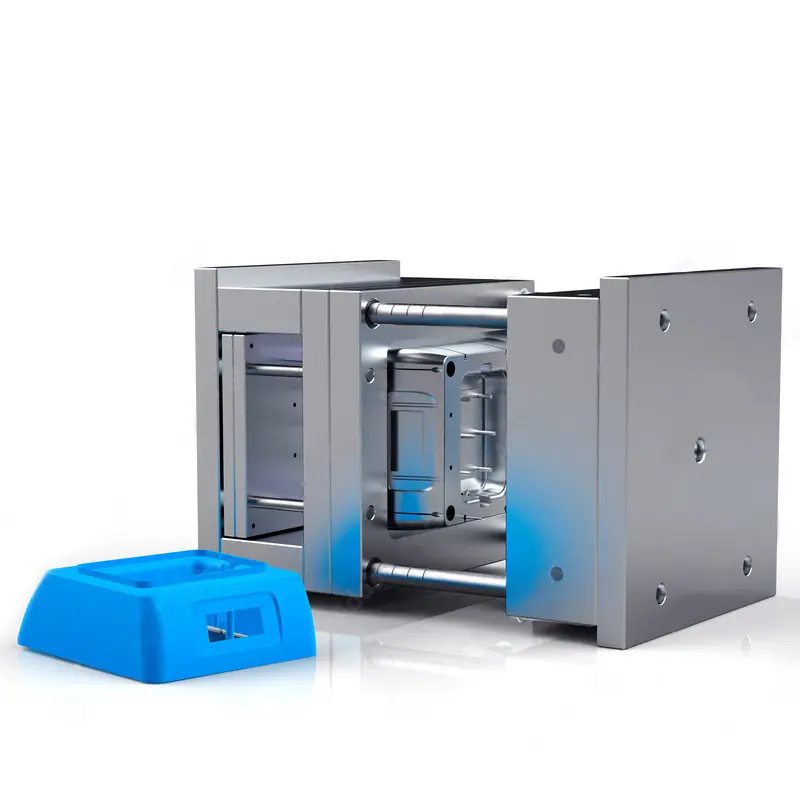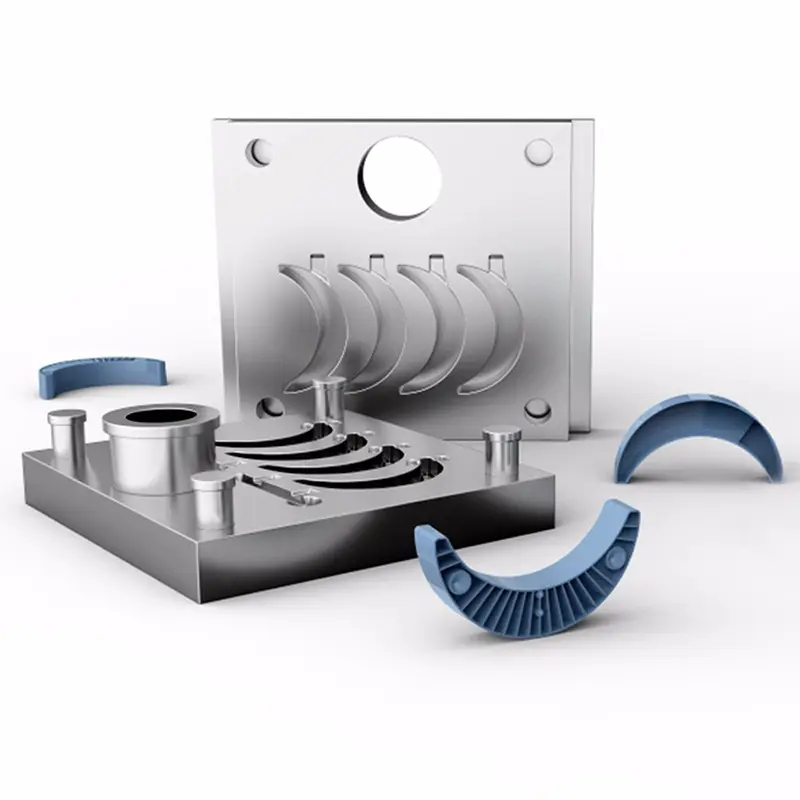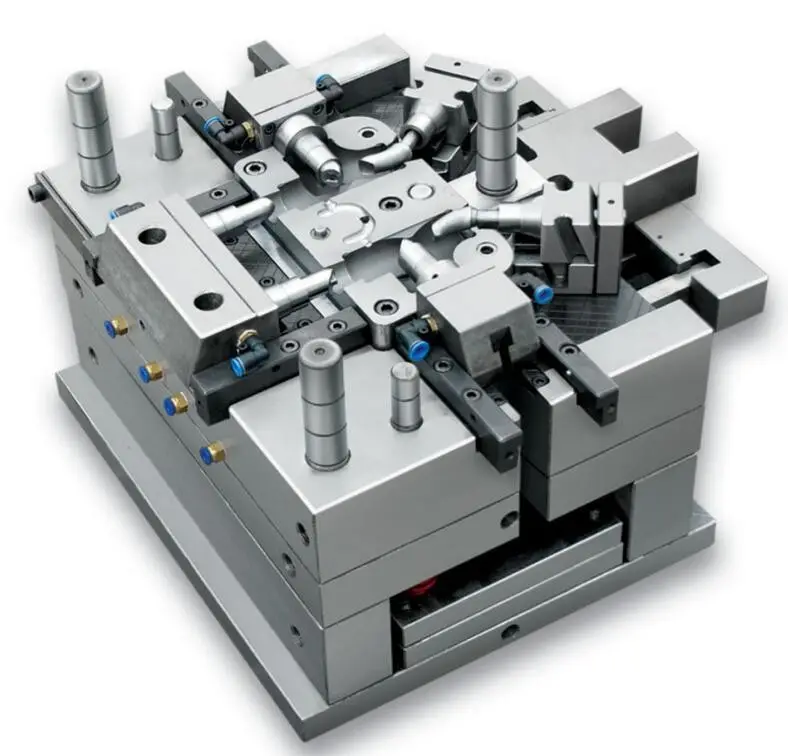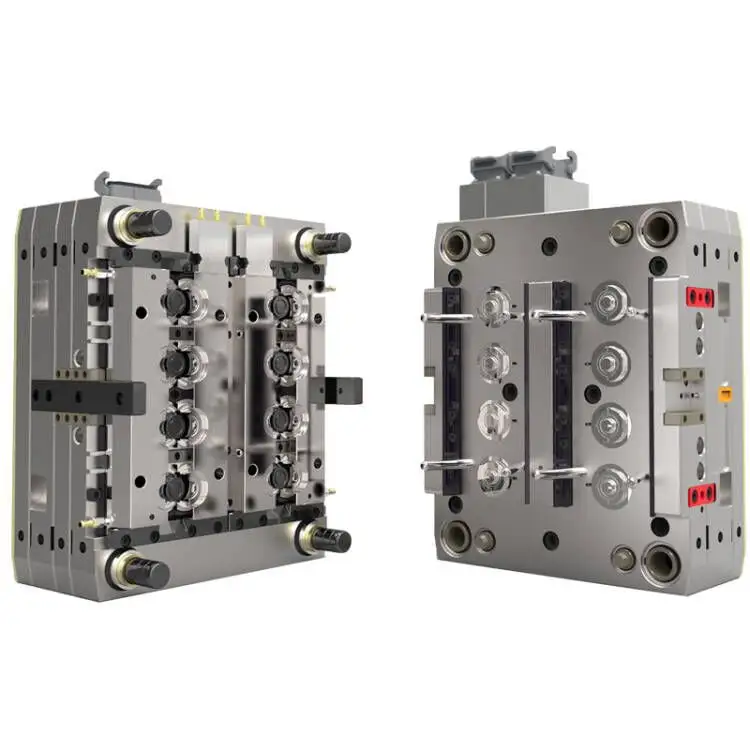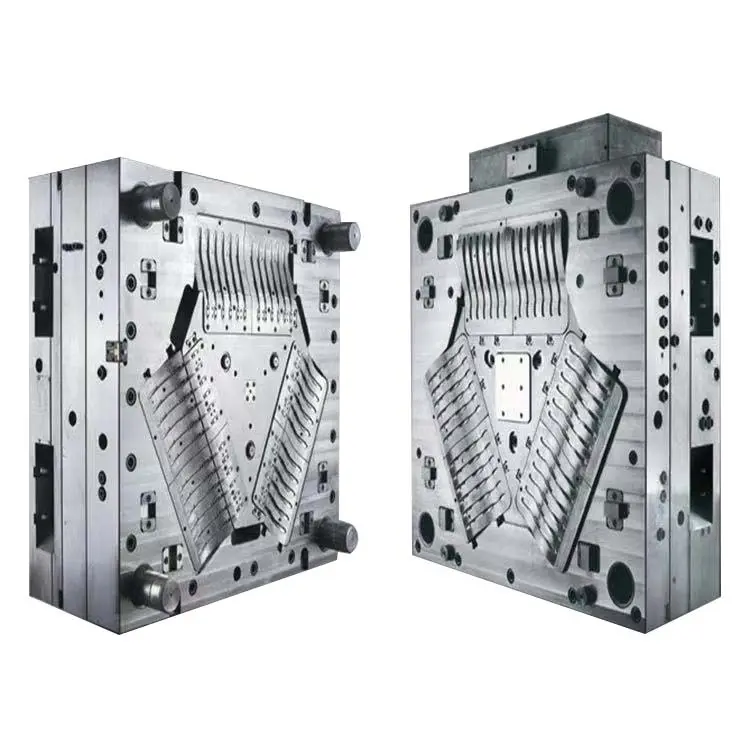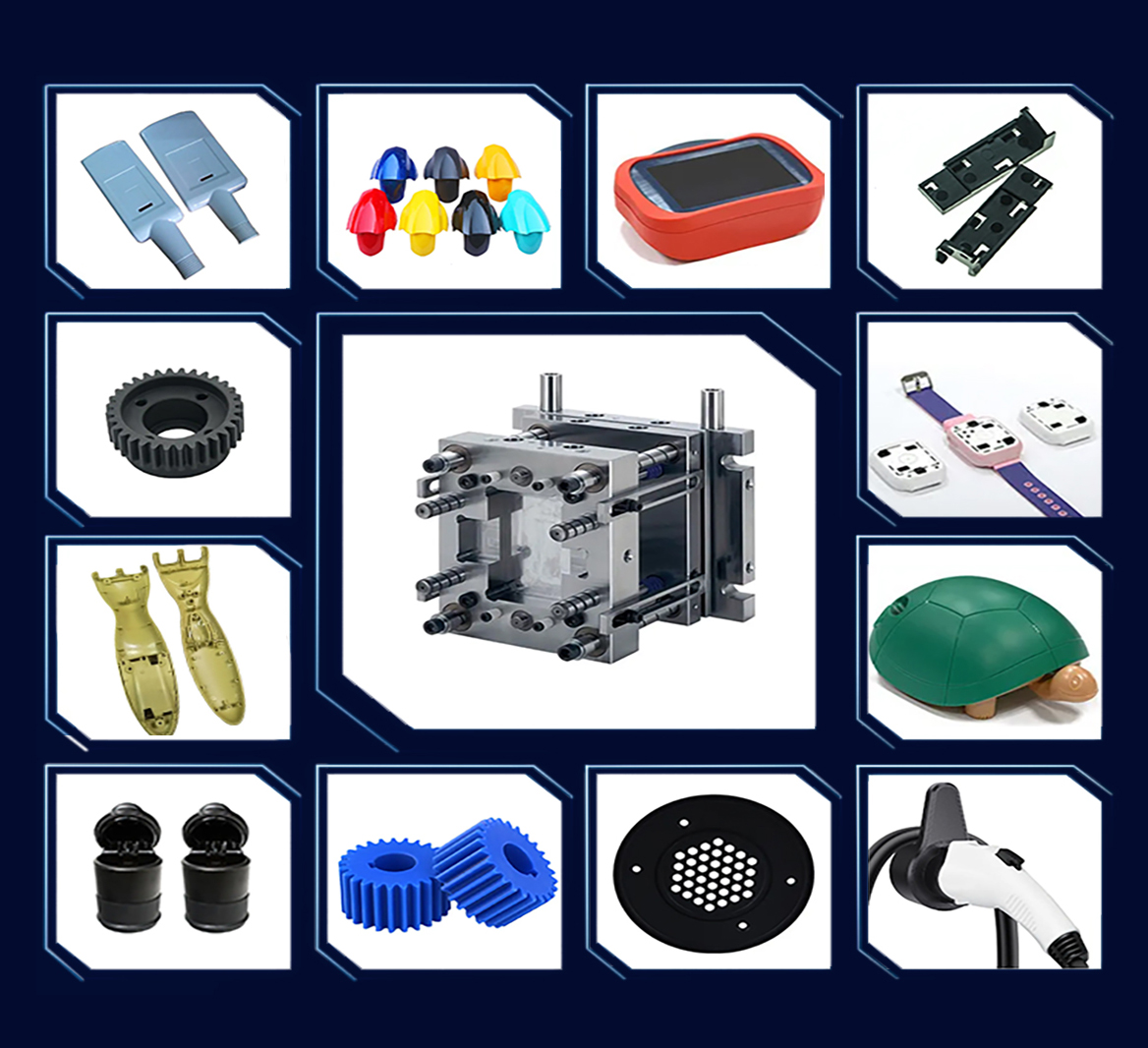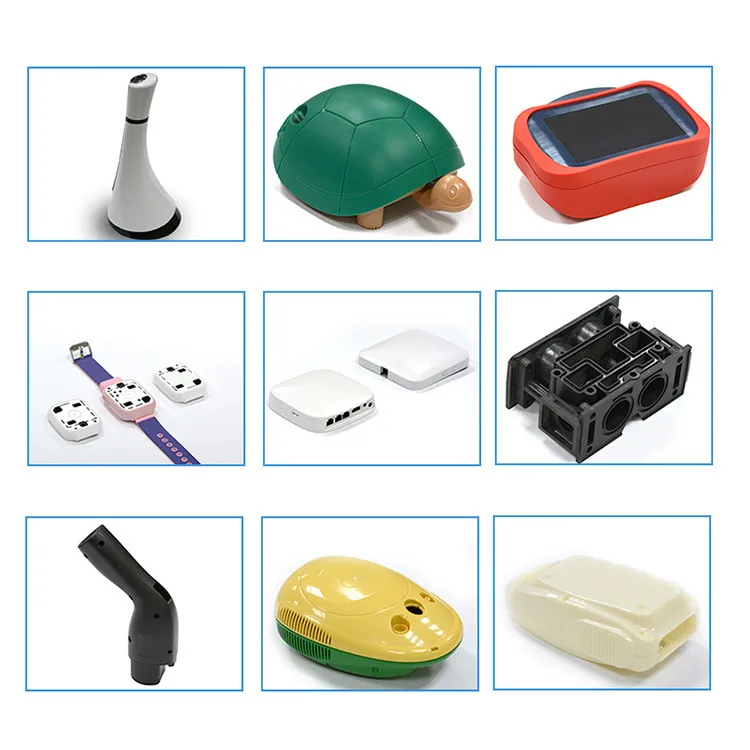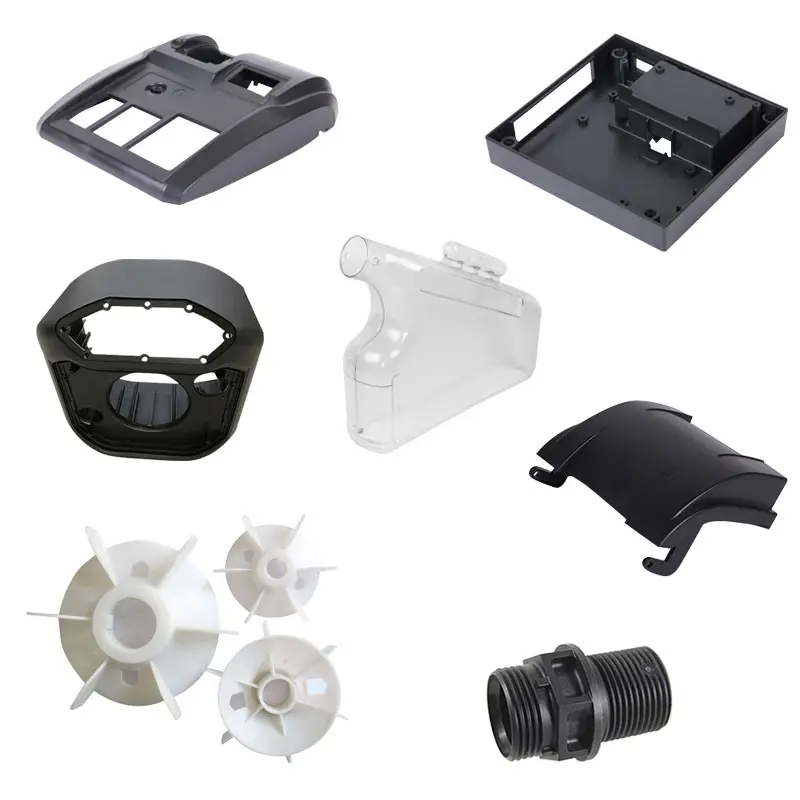What is Injection Molding?
Injection molding is a manufacturing process in which molten material, typically plastic, is injected into a mold cavity to form a part or product. This method is widely used for producing high-precision parts in large volumes. Elite, a leading injection molding manufacturer, specializes in using this process to create complex, detailed components with consistent quality and efficiency. Injection molding is ideal for producing parts with intricate designs, tight tolerances, and a high degree of repeatability.
What is Compression Molding?
Compression molding is a manufacturing process where a material, often a thermosetting resin, is placed into an open, heated mold cavity. The mold is then closed with a top force or plug member, applying pressure to the material to shape it into the desired form. Compression molding is typically used for larger, simpler parts and is common in industries like automotive and aerospace. While not as precise as injection molding, this process is effective for creating strong, durable parts with minimal waste.

How Do Injection Molding and Compression Molding Differ?
What Are the Key Differences in the Processes?
The primary difference between injection molding and compression molding lies in how the material is introduced to the mold and the types of materials used. In injection molding, the material is heated until molten and then injected into a mold under high pressure. In compression molding, the material is usually placed into the mold in a pre-heated, softened state and then compressed to take the shape of the mold.
Injection molding is generally faster and more suitable for high-volume production of intricate parts, while compression molding is better suited for larger, simpler parts that require high strength and durability. Elite’s expertise in injection molding allows for the production of detailed, complex parts with high precision, making it the preferred method for many applications.
How Do the Materials Used Affect the Outcomes?
Injection molding typically uses thermoplastics, which can be melted and reshaped multiple times. This allows for high flexibility in design and material choice. Compression molding, on the other hand, often uses thermosetting plastics, which harden permanently when heated. This results in parts that are exceptionally durable but cannot be remelted or reshaped.
Elite’s injection molding process is ideal for producing parts that require complex geometries and high precision, with a wide range of material options to meet specific performance requirements. Compression molding is more appropriate when the primary need is for durability and strength in larger, simpler parts.

What Are the Advantages and Disadvantages of Each Method?
Why Choose Injection Molding?
Injection molding offers several advantages, particularly for projects that require detailed, high-precision parts. These include:
- High Precision and Consistency: Injection molding is capable of producing parts with very tight tolerances and consistent quality across large production runs.
- Material Versatility: The process supports a wide variety of thermoplastic materials, allowing for customization based on the specific needs of the part.
- High Efficiency: Once the mold is created, the injection molding process is fast and highly automated, making it cost-effective for large-volume production.
However, the initial cost of creating the mold can be high, which may not be economical for small production runs. Elite helps clients assess whether injection molding is the best method based on their project requirements.
When Is Compression Molding the Better Option?
Compression molding is advantageous in situations where strength and durability are paramount, or where the part size is large and relatively simple. The benefits include:
- Lower Tooling Costs: Compression molds are typically less expensive to produce, making this method more cost-effective for smaller production runs or larger parts.
- Material Strength: The use of thermosetting plastics in compression molding often results in stronger, more durable parts that can withstand harsh conditions.
However, compression molding is generally slower and less suitable for producing parts with intricate details or tight tolerances. Elite advises clients on the best molding process based on the complexity and intended use of the part.
How to Choose Between Injection Molding and Compression Molding?
What Factors Should You Consider?
When deciding between injection molding and compression molding, several factors should be considered:
- Part Complexity: If the part requires intricate details, tight tolerances, or a complex design, injection molding is typically the better choice.
- Production Volume: For high-volume production, injection molding is more cost-effective due to its speed and efficiency. Compression molding may be more suitable for smaller runs or larger parts.
- Material Requirements: The choice of material can also dictate the molding process. Thermoplastics are best suited for injection molding, while thermosetting plastics are typically used in compression molding.
- Cost Constraints: Consider the costs associated with tooling, materials, and production. Injection molding has higher upfront costs but is more economical for large volumes. Compression molding has lower initial costs, making it better for smaller runs.
How Can Elite Help in Choosing the Right Molding Process?
Elite provides expert guidance to help clients choose the most appropriate molding process for their specific needs. By evaluating factors such as part design, material requirements, and production volume, Elite ensures that the chosen method delivers the best balance of quality, efficiency, and cost-effectiveness.
Conclusion
Understanding the differences between injection molding and compression molding is crucial for selecting the right manufacturing process for your project. Injection molding, offered by Elite, is ideal for producing high-precision, complex parts in large volumes with a wide range of material options. Compression molding is better suited for larger, simpler parts that require high strength and durability. Elite’s expertise in both processes ensures that clients receive the best possible solution for their manufacturing needs, with a focus on quality, efficiency, and cost-effectiveness.

